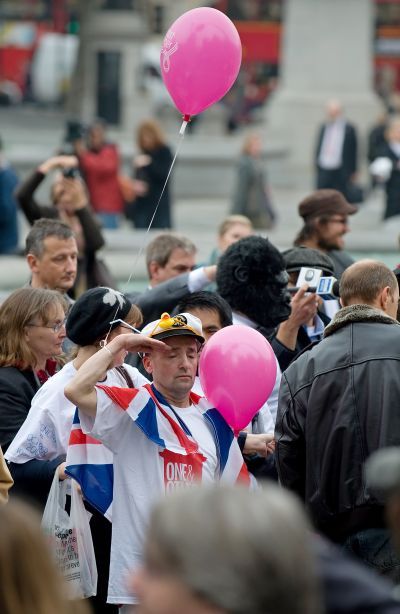Human art show in London's Trafalgar Square closes

A 100-day long art experiment which saw people mount the empty fourth plinth in London's Trafalgar Square came to an end on Wednesday with a mass singalong.
Some 2,400 volunteers have occupied the plinth in hourly turns, doing whatever they liked -- including singing, pole dancing, stripping, protesting, dressing as faeces, begging for a job, releasing live chickens, hollering bedtime stories through a megaphone or just enjoying the view.
The final person to take the plinth, 30-year-old medical photographer Emma Burns, from Darlington in northeast England, was cheered as she was guided back down to the ground.
"It's a very strange mixed emotion," said artist Antony Gormley, who came up with the "One and Other" project.
"We've had 2,400 unbroken hours of occupation by living, human people in a place of bronze public sculpture and that's an achievement.
"But at the same time I'm very sad that it's over. It's become, in a way, part of London life."
Burns used her slot to remember victims of the 1989 Hillsborough Disaster, in which 96 Liverpool Football Club fans were crushed to death.
Around 200 onlookers sang the club's anthem "You'll Never Walk Alone" as she came down from the seven metre (23 feet) high plinth.
Gormely said the range of activities undertaken on the plinth had been one of the project's strengths.
"It's the extraordinary unstable mixture between people who've just done something for fun and those that have gone up there with a burning cause that they want to represent that makes it so rich and actually very difficult to criticise.
"I've used this space as a test site for how we represent ourselves and the world we live in. It's been a confusing and very varied picture and I think it's not about judging, it's about listening.
"What we are talking about here is using this space... to look at us now and I think it's succeeded."
The plinth was built in 1841 and was intended for a statue of king William IV on a horse, but it was never completed and nobody has been able to decide since what should go there permanently.
In recent years it has been used for various art projects.
Subscribe to Independent Premium to bookmark this article
Want to bookmark your favourite articles and stories to read or reference later? Start your Independent Premium subscription today.

Join our commenting forum
Join thought-provoking conversations, follow other Independent readers and see their replies